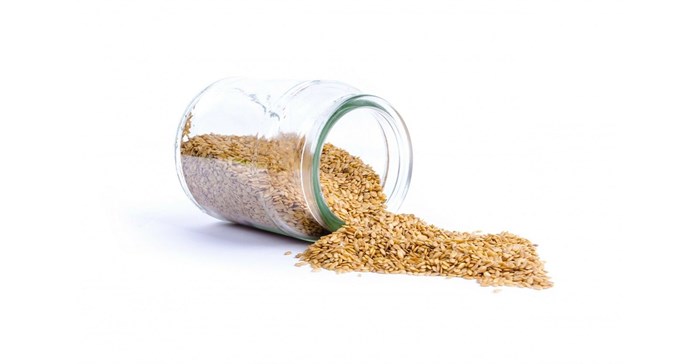
Top stories



AutomotiveCar parts 101: What does a car warranty cover and how ageing vehicles change the risk equation
dotsure 3 days


The increased global consumption of sesame seeds is mainly due to the heightened demand for the product from the growing Asian and African populations. This increase is being reinforced by the spread of African and Asian cuisine worldwide, following a rise in the number of migrants.
In value terms, the market decreased by 3% to $11.9bn in 2016 (IndexBox estimates). From 2007 to 2016, the market value was subject to significant fluctuations against changes in prices and crop yield. A significant increase in prices from 2013-2014 was caused by the 2013 decline in sesame seed output in the key producer countries (including Ethiopia, India, China and Nigeria), as a result of the adverse weather conditions. Over the period from 2015-2016, prices returned to their 2012 figure.
The countries with the highest consumption were Tanzania (21% based on tonnes), China (19%), followed by Sudan (9%), Myanmar, India, Ethiopia and Nigeria (6% each), together comprising almost 74% of global consumption. The highest annual rates of growth with regard to sesame seed consumption from 2007 to 2016 were recorded in Tanzania (+32.5%) and China (+9.1%). These high rates of growth in Tanzania can be explained by the increased production of sesame oil in the country.
Amongst the leading consuming countries, high levels of per capita consumption were recorded in Tanzania (30.8 kg per year), Sudan (17.6 kg per year) and Myanmar (10.1 kg per year), while the global average per capita consumption of sesame seeds was estimated at 1.1 kg/year in 2016. China (1.1 kg per year) and India (0.4 kg per year) recorded the lowest per capita consumption figures in terms of the major consumer countries.
Sesame seeds are one of the main seed crops in the Asian and African regions, in particular in Tanzania, China, Sudan, Myanmar, India, Ethiopia, and Nigeria, etc. They are used in the preparation of traditional dishes and confectionery, as well as in the pharmaceutical and cosmetic industries.
The steady demand for sesame seeds and sesame seed related products is also being generated by the increasingly popular healthy eating trend and the tendency to prefer organic cosmetics and other such products. In addition, the increased popularity of Asian and African sesame seed-based seasonings, marinades and sauces in Europe and North America is also a factor.
It is expected that the consumption of sesame seeds will grow at a rate of +2.0% per year in the next nine years, which will lead the market to 9.5 million tonnes in 2025.
The production of sesame seeds reached 8.2 million tonnes in 2016, with a positive dynamic being recorded over the period under review. From 2007-2016, the average annual rates of growth with regard to sesame seed production reached +7.4%. Over the period under review, the harvested areas of sesame seeds expanded at an average annual rate of growth of +5.8%, reaching 11.7 million ha by 2016.
Sesame seeds mainly grow in Africa and Southern Asia. The crop is acutely sensitive to the prevailing weather conditions. Equally, yield figures remain relatively stable, at 0.7 tonne/ha, fluctuating mildly over the period from 2007-2016.
Tanzania was the key world sesame seed producing country with an output of about 1.8 million tonnes in 2016, which accounted for 22% of the total global output. The other major producers were Sudan (12%), Ethiopia (10%), India (10%), China (8%), Nigeria (8%), Myanmar (7%) and Burkina Faso (5%). In Tanzania, production increased by +31.1% annually from 2007 to 2016. The other major producing countries also displayed a notable growth with regard to sesame seed output in physical terms. From 2007-2016, annual rates of growth were especially high in Ethiopia (+13.0%), Nigeria (+4.0%) and China (+1.7%).
In 2016, the volume of global exports increased to 2.3 million tonnes, an increase of 8% against the previous year. However, from 2007 to 2016, global sesame seed exports indicated a steady growth, with a CAGR of +7.6%.
Ethiopia (18% based on tonnes), India (14%) and Sudan (11%) were the main suppliers of sesame seeds in the world. Ethiopian (+6 percentage points) exports steadily increased, while the share of Indian (-11 percentage points) sesame seed exports decreased significantly from 2007 to 2016.
The volume of global sesame seed imports totalled 2.1 million tonnes in 2016. The imports dynamic was generally in line with exports: globally, these trade flows complement each other. From 2007 to 2016, global sesame seed imports steadily increased, with a CAGR of +8.2%
China (45% based on tonnes) was the main consumer of sesame seed imports. With the exception of China, the main importers of sesame seeds were Japan and Turkey (7% each). While the share of China in terms of global imports of sesame seeds (+6 percentage points) increased, the share of Japan (-9 percentage points) and Turkey (-4 percentage points) decreased from 2007 to 2016.